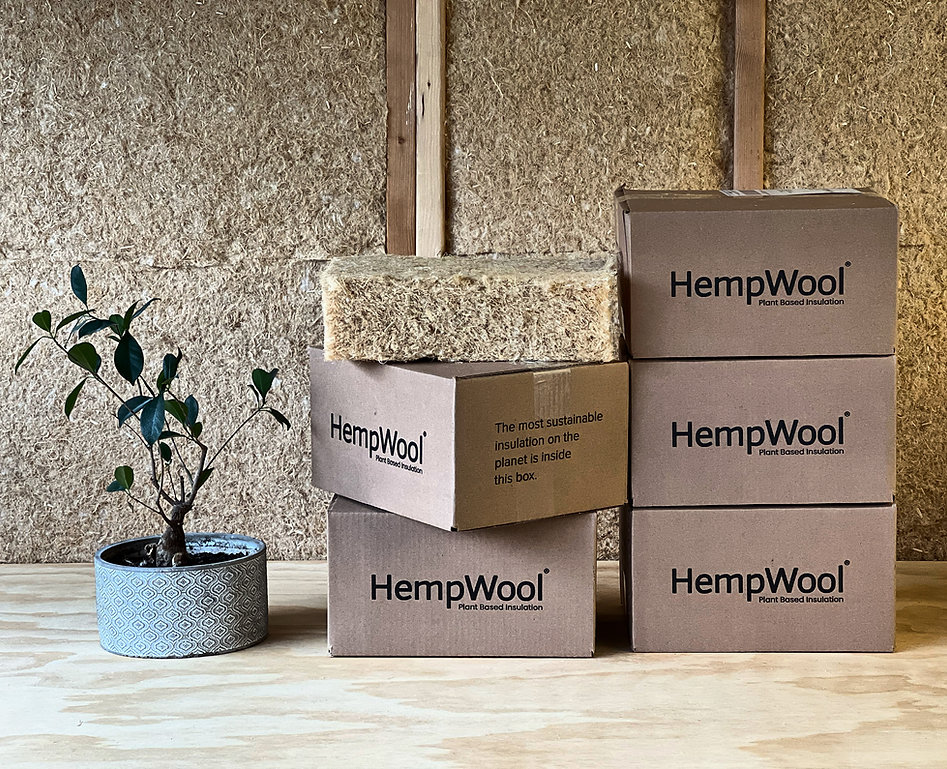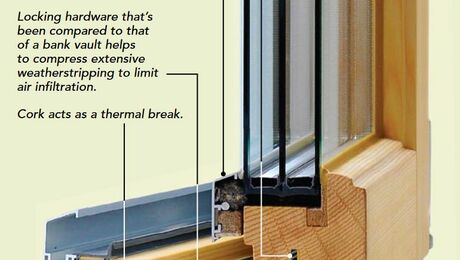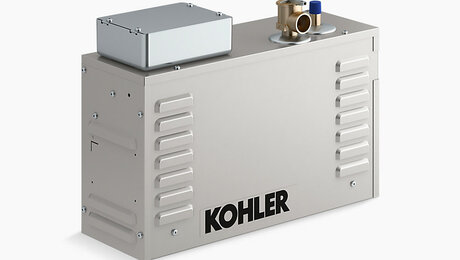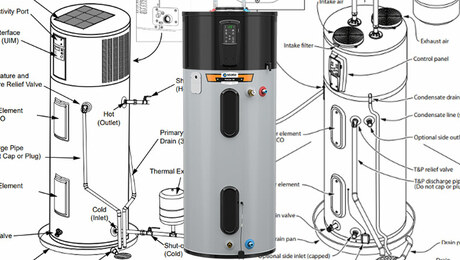
EDITOR’S NOTE: This post is part of the Expert Exchange series, an editorially directed and expert-driven platform for information and discussion around leading-edge building science principles and projects. The fourth quarter topic—made possible with support from our sponsor*, Rockwool—is “Choosing Products and Materials for a Green Home.” View the related webinar featuring the experts who have contributed to this series.
Humans are struggling with several crises right now, and two of these are directly related to the air we breathe. One crisis is related to the increasing amount of carbon in our atmosphere due primarily to emissions from burning fossil fuel for energy. The second is disease from airborne viruses and our inability to control something as amorphous as air. Both of these issues are complicated. We don’t all agree on the causes or the solutions, and the disagreements have become vehement. Enough said about that!
Conversely, what is simple and undebated is that using the natural material wood in our buildings will help us combat both of these crises. Wood construction benefits both outdoor air quality and the impact of indoor air quality (IAQ) on our immune system, overall health, and productivity. Let’s take a closer look at how this gift from Mother Nature benefits both outdoor and indoor air.
Wood and outdoor air carbon levels
The burden of carbon dioxide in the atmosphere can be reduced by withdrawing carbon molecules from the air and storing them in materials. Trees gain their energy to grow through photosynthesis, a process of manufacturing glucose using sunlight, water, and carbon dioxide from the air. Carbon dioxide is drawn in through the leaves, photosynthesis occurs, and oxygen is released back into the atmosphere. The carbon atom remains stored in the wood in an inert form. Because of this property of capturing and holding onto carbon, trees actually decrease atmospheric carbon, becoming a beneficial, “carbon sink.” Conversely, mammals (such as ourselves) that ingest carbon-containing proteins and carbohydrates are the opposite of a carbon sink because we exhale carbon dioxide.
In summary, if buildings are constructed of wood, not only are the emissions from manufacturing steel and other building materials reduced, the innate carbon-storing property of wood is utilized to benefit decarbonization of the outdoor atmosphere.
Wood, indoor air, and human health
Prior to COVID-19, the engineering focus on IAQ for occupants in non-healthcare settings was to create “comfortable” conditions. With the realization that SARS-CoV-2 transmission is primarily airborne, the focus expanded to include decreasing the concentration of airborne viruses indoors. Consequently, recommendations for increased ventilation, filtration, and the use of various types of air-cleaning technologies quickly emerged. While these strategies can potentially decrease the number of infectious aerosols in the occupants’ breathing zone, they do nothing to address the most effective step in decreasing disease spread, our innate immune defenses. Furthermore, they also increase energy consumption dramatically.
Now that the pandemic commands less attention in the news, the price of fuel has skyrocketed, and extreme climate events are wreaking havoc in communities around the world, energy efficiency and building decarbonization are once again in the forefront.
How can this triad of goals be attained: 1. managing IAQ to support human health; 2. decreasing wasteful energy use; and 3. increasing the use of non-carbon and passive strategies in building design and management? We can turn to wood.
Wood is beautiful and brings nature into our living environment. Perhaps less well known is the role that it can play in creating IAQ that directly benefits our immune system and overall health. How does wood do this? An abundance of medical and epidemiological research shows that low relative humidity (below 40%) impairs the mammalian immune system. At the same time, high relative humidity, over 60%, is uncomfortable to many people and is associated with problems such as allergies to dust mites and liquid condensation on cool surfaces.
Wood materials help modulate indoor humidity to stay in the beneficial mid-range zone through a property known as hygrothermal performance. Materials with hygrothermal performance adjust the indoor humidity by managing indoor latent heat loads. The unique porous structure of wood adsorbs, or stores, water vapor when the humidity is high such as after a shower, and desorbs, or releases, the water vapor molecules when the humidity drops. These hygrothermal properties moderate short-term interior humidity variations, making exposed indoor wood a passive contributor to good IAQ.
Using architectural materials with hygrothermal performance is not a new approach to humidity management. Walls made of vapor-permeable and hygroscopic materials, sometimes called, “breathing walls” have been around for decades. The term “breathing” refers to the movement of water vapor into and out of micropores in the wall material in a time frame that contributes to regulating the room climate and IAQ. The water vapor capacity and the rate of adsorption-desorption are determined by the pore size and surface functional groups of the wood. According to the Kelvin capillary condensation equation, water vapor has reversible adsorption-desorption performance when the material pore size ranges from 2–20 nm.


Untreated wood, as well as other hygrothermal materials such as concrete, stone, and brick are found in vernacular architecture depending on local availability. The ability of trees to decrease outdoor carbon, combined with harvested wood’s ability to passively contribute to maintaining mid-range indoor humidity to support to our health, brings this natural and renewable resource to the forefront.
Looking ahead, if construction with wood gains greater traction, responsible strategies to harvest and renew timber resources will be the next frontier.
*Sponsors are not offered the opportunity to review articles before publication or to edit our authors’ words.
_______________________________________________________________________
Dr. Stephanie Taylor, MD is founder / CEO of Building4Health, a consulting service for evaluating the health impact of the built environment. A physician from Harvard Medical School with a master’s in architecture, Dr. Taylor’s current research focuses on the interaction of indoor air and surfaces, the microbiome of the built environment, and the influence of the indoor environment on acute and chronic illnesses.
Weekly Newsletter
Get building science and energy efficiency advice, plus special offers, in your inbox.













3 Comments
Great concept Dr. Taylor. I'm interested to hear from yourself and others what natural/untreated interior finishes (or commercially available products) would potentially fulfil the dual objectives of temperature and humidity buffering to a degree where it is significant to both occupant health/comfort and energy consumption.
Agreed, the amount of water vapor that can be practically captured and released from wood finishes seem rather minimal to me, without any trustworthy data I am not buying it. Also, exposed dry wood is known for it's combustible quality...
So happy to read your contribution, Dr. Taylor. For those who have not had the pleasure of hearing you speak, I highly recommend viewing the recorded session “Choosing Products and Materials for a Green Home,” available here at GBA in the link at the introduction to your excellent article.
Log in or create an account to post a comment.
Sign up Log in